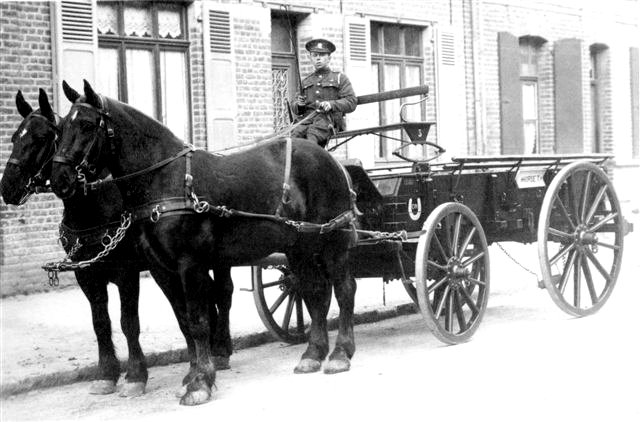Topic: CEF

Supplying an Army When in Field
Whole System Changed
The Spokesman-Review, Spokane, Wash., 8 November, 1914
Although this article isn't specifically about the CEF, it has been tagged as such to keep it with other First World War material.
The Manchester (Eng.) Guardian says: The English Soldier, when he goes into action, carries with him … 250 rounds of ammunition. The ammunition is carried in the bandolier or pouch, with the exception of 10 rounds which are stored away in the magazine of the rifle, and to be used in an emergency. The men, with ammunition, carry a total weight of about 60 pounds each. The whole system of the English army supply has been greatly changed since the South African war.
The new chain of supply gives between one and two days 'iron' rations in the haversack, half a day's ration in the cook's wagon, and one ration and grocery in the train or supply column, making a total of two and a half to three and a half days' rations with the field units, as against five and a half days' supply under the old system. The quantity of supplies provided now is actually less. The new system is now on its trial, and it is believed that it will be found an improvement on the old, because, through the use of motor-lorries in the supply column, the radius of action has been increased and the delivery of supplies accelerated.
It has been proved in practice that the three-ton lorries, over average roads, can deliver their loads 47 miles away and return empty the same day. Their speed has worked out at 12 to 14 miles an hour and that of the 30-hundredweight vans used for the cavalry supplies at 16 to 20 miles.

In order to safely send reinforcements to the firing line to meet the wastage of war, to convoy food to the troops, to transport small-arms ammunition and shells for the guns and generally to provide for the requirements of an army in battle, a 'line of communications' from the base of operations to the firing line must be established. The wastage of war is calculated differently in the various armies. The average is fixed at 70 per cent of the army in the field during the first year of the campaign. In this period and on this rough basis the number of men passed along the lines of communication for a single division will be, roughly, 14,000 to maintain the formation at field strength. To feed this force the weight of supplies and forage which would have to pass along the line daily is represented by 110 tons, and requires for its transport 85 general service wagons, or 39 lorries. A further calculation of road space shows that the convoy would occupy over three-quarters of a mile of road, or half a mile if mechanical transport is employed. The gun ammunition to be maintained on the lines of communication as a reserve for a single division of troops weighs 376 tons, the rifle ammunition 173 tons, and machine gun ammunition nine tons, making a grand total of 538 tons which has to be kept always available to pass to the front. There is also the transport of the sick and wounded to be passed from the front to the hospital at the base.

